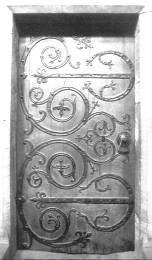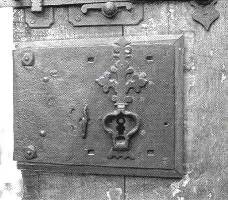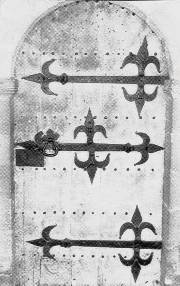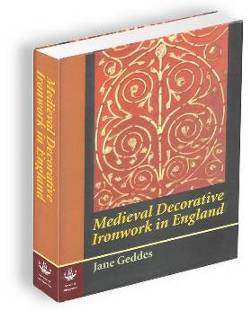
|
Jane Geddes
Medieval Decorative English ironwork from 1050-1550
|
This is not a book for everybody, and given the price I would not suggest its acquisition as just an addition to a blacksmithís general reference library (unless the smith is really well heeled).
Secondly, the whole is almost entirely drawn from doors and chests in churches.
This is not a book of tools, weapons, armor or implements.
However, if you have a deep interest in, or specialize in medieval ironwork, and you are willing to give the book a careful reading, it is worth every cent of the price, for both inspiration and education.
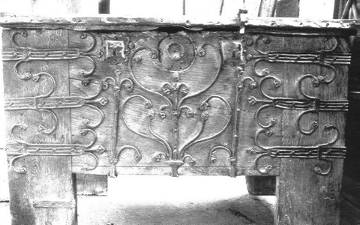
Chest with stamped and cut work, Noyon Cathedral, France. 14th century? I am already working on a chest for my daughter-in-law incorporating the decorative elements from a chest dated to the 12th century and then ďmodernizedĒ with fleurs-de-lis in (perhaps) the 15th century. Helpful hints:
 Medieval Decorative Ironwork in England
Medieval Decorative Ironwork in England
by Jane Geddes © 1999 The Society of Antiquaries of London Burlington House Piccadilly, London W1V 0HS ISBN 0 85431 273 0; ISSN 0953-7163; 411 pages; $125 Available through Norm Larson Books 5426 E. Hwy. 246 Lompoc, CA 93436
|
